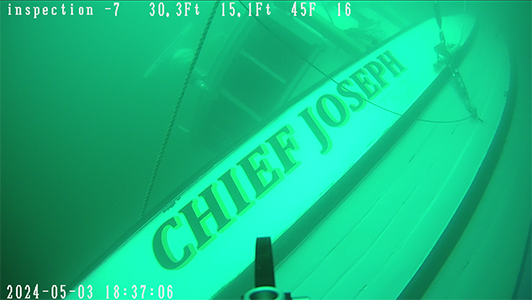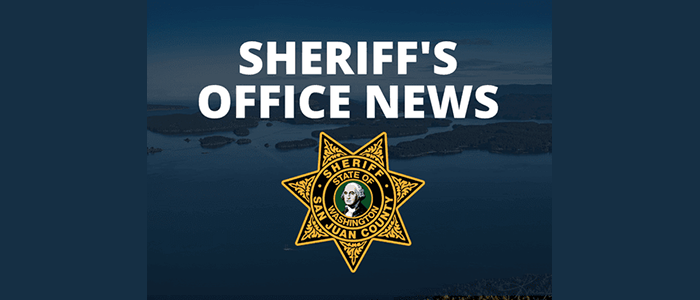||| FROM HILARY CANTY for ORCAS ISLAND COMMUNITY FOUNDATION |||
Thank you for this honor. I am deeply appreciative. Community Leadership is a team sport and I thank the Orcas Island Community Foundation staff, Board, volunteers, donors, nonprofit peers, and neighbors who contribute to making Orcas a healthy and thriving community for all.
And by all, I mean all, including our aging neighbors who now need assistance to manage daily life, our neighbors who struggle to find a place to live indoors, or to put food on the table, our youngsters who grow up here and hope to stay, those who have lived here for decades and our many new neighbors who have purchased or built homes over the past few years. All are part of this community and this community grows strong and resilient by caring for every member.
I have been on a steep learning curve since I started work at the Orcas Island Community Foundation 15 years ago. When I joined OICF as its Executive Director, I had no real idea of what the role of a community foundation was, and what OICF’s value could be to the community.
Among other activities, OICF invests funds for organizations and donors through donor advised funds. We support our nonprofit partners with Board Development, capacity building and with a community grants program, inviting the nonprofit sector to submit proposals and then coordinate the fundraising efforts. Through
these bi-annual campaigns, we welcome the entire community to contribute towards fully funding them at whatever level they can afford.
We foster connections and strive to keep the tradition of “neighbors helping neighbors” at the core of the community. Over the years, OICF has grown into a trusted and useful partner that the community can rely on in good times and bad – as the pandemic proved so well.
The early days of the pandemic were so uncertain. Remember when we had no idea how the virus spread? Suddenly mail and groceries became potential carriers. PPE quickly became a rare commodity. There was no vaccine available yet and the health complications of an infection were especially threatening for an aging population like ours. Soon, we were all asked to shelter in place with no end in sight. Overnight, income streams dried up, public facilities shuttered, and many faced a very frightening and unstable future.
On Orcas, the nonprofit sector jumped into action. It was immediately clear that many neighbors would need help with essential services such as food, rent relief, and reliable shelter. After several discussions with our nonprofit partners, it was decided that we should set up one central fund to collect and distribute donations
as needed, as quickly and efficiently as possible. OICF established the Community Emergency Response Fund in March of 2020.
This approach allowed us to respond nimbley to the ever changing, ever growing needs rising out of the community. It was important that the community was well represented as part of the decision making process so the Fund’s Advisory Team included several nonprofit and faith based leaders along with representatives
from the OICF Board.
OICF launched weekly meetings, via zoom, with community representatives who were working to provide essential services. These sessions allowed people to share what was happening in their areas and how the needs were shifting and expanding at a rapid rate. Working together, gaps were identified and many creative and collaborative solutions surfaced. We invited those providing essential programs to request the funding they needed to get the work done, having faith that the money would be coming.
And it sure did it. Our initial goal was to raise $250,000. Within the first three months, we raised $500,000 in donations and distributed that much in grants. This support allowed the nonprofits to focus on building their capacity, and develop programs to ensure services were readily available to all in need, rather than spend precious time fundraising or worrying that they could not provide due to a scarcity of resources. We were able to keep this funding stream going throughout the 2 plus years that Covid kept the community at a stand still,
ultimately investing over $2.5 million in local programs for direct support of neighbors.
As it turned out, this support was empowering.
While I was hearing from other community foundation peers that the food banks in their communities were shutting down due to a lack of volunteers and vanishing access to food supply chains, our food bank was doubling down, buying fresh baked bread from local bakeries and purchasing ready to eat meals from local restaurants to distribute. This helped not only to feed people but to also keep some money flowing through local businesses that were otherwise shuttered. Younger staff were able to step in and take over the roles of senior
volunteers who could not afford exposure. The Orcas Island Food Bank saw the number of neighbors who shopped with them double then double again in the first few months and they were able to feed all who came.
The Meals on Wheels program run by the Orcas Island Senior Center experienced a similar rise in need, doubling then doubling again. They were able to expand their volunteer base to cook for and deliver meals to all who signed up. They also realized that so many seniors were now fully isolated at home, often alone. They launched an all island volunteer effort to call every resident 65 and older, and offered to match them with a phone buddy for frequent check in calls. These calls provided critical social connection that helped maintain bonds to the community for the long stretch of the pandemic.
A similar innovation was happening at OPAL Community Land Trust. With so many community members out of work and unable to make rent and mortgage payments, OPAL launched a housing assistance program, open to everyone. Grants were given to help residents make their mortgage or rental payments, keeping funds moving through the community and lessening the stress level for all.
The Orcas Community Resource Center was able to double its staff, and hire a native Spanish Language support staff member and two trained social workers to ensure outreach for all members of our community. They provided crucial essential services to the many neighbors who were living unhoused or without access to basic necessities.
I could go on and on. What we saw transpire on Orcas over the two years of Covid was amazing.
When given adequate funding and the ability to fully focus on programs and community needs, the nonprofits flourished, services were abundant, and the ever changing needs were met with creativity and generosity. The community took care of each other.
We learned that all the needed resources, human and financial, exist here already. In a time of crisis there was an urgency to contribute, and we were able to raise enough and do enough to provide for everyone with donations ranging from $10 to $500,000. People gave what they could afford and were offered what they needed.
Unfortunately, the number of neighbors who must rely on community services to make ends meet is not returning to pre-pandemic numbers. The cost of living on the islands continues to outpace wage scales and the cost of housing has simply gone out of reach for many working families. In order to make their rent or
mortgage payments, many neighbors need help at times through a subsidy of one sort or another. Organizations that rapidly expanded during Covid are finding they must maintain that much higher level of service going forward to keep pace with community needs.
As the economic divide deepens, our reliance on the support and subsidies provided by social service organizations to working families and individuals will only increase. If we want to have sufficient staff for our schools, trained volunteers for emergency services, skilled healthcare workers and waitstaff for our restaurants, we need to help fill the gap.
Right now, we have gone back to our pre pandemic practices, expecting our nonprofits to return to the days of holding bake sales, raffles and Galas to raise their operating funds. They are back to using some of their most precious resource, staff time, to try to eke out enough contributions to keep the doors open.
We have returned to a scarcity model which does not lend itself to supporting creative and nimble efforts, let alone meeting basic needs.
If we are going to continue to rely on philanthropy to fund essential services and bridge the ever growing income equality gap, what will it take to commit to a consistent and sufficient level of support without a looming crisis? How do we maintain a sense of urgency to contribute to the well-being of our islands community?
Funding the nonprofits that provide many of the services that keep the islands a healthier, more diverse, and equitable community for all who call this place home is key to community resilience.
Our best bet is to double down on our investment in the organizations that served us so well throughout the pandemic-
- If you are a donor, consider making a monthly pledge that the organizations can rely on for consistent income. Make sure to include a gift to the nonprofit sector when making estate plans. Encourage your new
neighbors to engage as well. - If you are a granting organization, make unrestricted grants to allow the organizations the freedom to be as creative and nimble as needed. When possible, commit to multi year funding,
- If you are in government at the County, State or Federal level, make sure you are including sufficient administrative funding to the nonprofit partners you are asking to run the programs you need.
Our County Council also has the opportunity to adopt HB 1590, a 1/10 of 1% sales and use tax that would generate funds for affordable housing and wrap-around housing support services. If passed, it is anticipated that this could generate approximately $750,000 annually, providing needed consistent funding to the three community Resource Centers in the County and the affordable housing organizations who are currently providing critical support. The Council will be voting on adoption in early October. This additional funding is essential.
Investing in community is critical if we want to maintain the qualities that make the islands such a remarkable place to call home. We have a choice of carrying that generosity forward. I know we have the resources to make it happen. I just hope we have the will.
We’ve seen what our island community is capable of during a crisis. And we’ve learned of the amazingly generous capacity of those who are capable of providing financial and other forms of support to our local nonprofits. We also know that there are future challenges that lie ahead. Being as well prepared as we can be will help us respond to those challenges successfully. We can do it – but it takes the support and involvement of each of us. This is our challenge … and our opportunity.









For context- this was my Keynote talk for the Economic Development Council Luncheon. The theme was Community Leadership.
Thank you for all the time and effort you provide to the community.